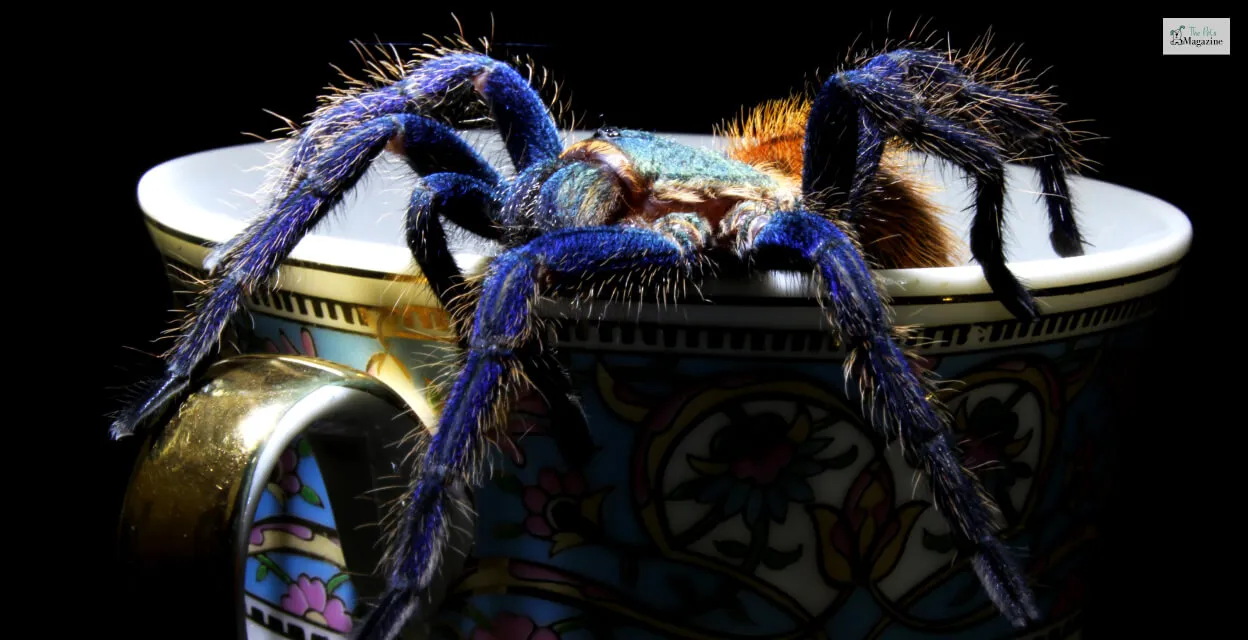What Makes Cobalt Blue Tarantulas So Colorful
The Cobalt Blue Tarantula (Cyriopagopus lividus) is renowned for its striking coloration, a vibrant display of metallic blue that captivates arachnid enthusiasts worldwide. But what is it about this species that gives rise to such an incredible appearance? The secret lies in a combination of genetic factors, the structure of their exoskeletons, and the way light interacts with their bodies. Understanding the science behind their colors allows us to appreciate these creatures even more and provides insight into their needs within a captive environment. The blue coloration is not merely cosmetic it serves important functions related to survival and communication within their natural habitat.
The Genetics of Cobalt Blue Coloration
Coloration in Cobalt Blue Tarantulas is primarily determined by their genetic makeup. While specific genes responsible for the production of blue pigment are yet to be fully identified, it is understood that genes play a crucial role in the synthesis and deposition of pigments and structural elements that create the blue hue. The inheritance patterns of these color traits may vary across different populations and individuals, resulting in subtle differences in color intensity and shade. Selective breeding in captivity can also influence the expression of certain color traits, leading to variations in the coloration of Cobalt Blue Tarantulas.
Melanin and Color Production
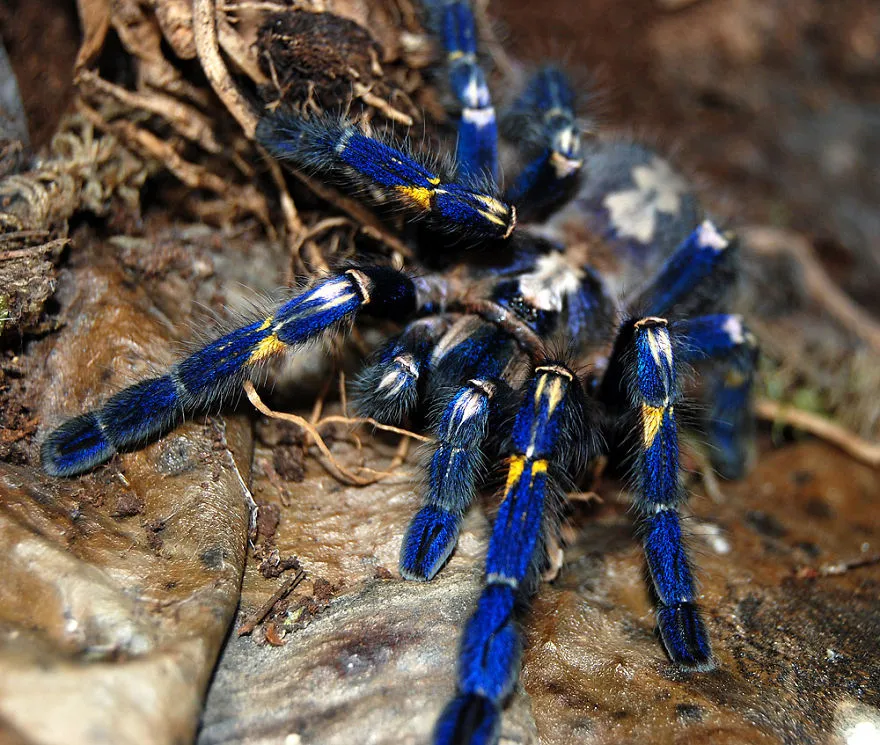
While not directly responsible for the blue color, melanin, a pigment typically associated with brown or black, plays a supporting role in the overall coloration. Melanin is responsible for the darker areas and the background against which the blue is displayed. It can influence the perceived intensity of the blue, with a richer melanin background often enhancing the vibrancy of the metallic blue. The balance between melanin and the structural elements which create the blue effect determines the overall aesthetic of these beautiful tarantulas.
Structural Coloration and Light Interaction
The primary source of the blue coloration is structural coloration, which arises from the physical structure of the exoskeleton, rather than from pigments. Tiny structures on the surface of the tarantula’s hairs and cuticle interact with light, causing it to scatter and reflect, resulting in the perception of blue. This phenomenon is similar to how the wings of some butterflies or the feathers of certain birds appear iridescent. The specific arrangement and spacing of these structures are critical, as they dictate the wavelengths of light that are reflected back to our eyes. The angle at which light strikes the tarantula also influences the observed color, causing shifts in hue and intensity depending on the viewing perspective.
The Importance of Blue in the Tarantula’s Habitat
The vivid blue coloration of Cobalt Blue Tarantulas likely plays a role in their survival, especially within their natural environments. While the exact function of this color is still being researched, several theories provide insights into its significance. These include camouflage, signaling and communication, and thermoregulation, each of which contributes to the tarantula’s ability to thrive. Understanding these aspects can also help owners provide an environment that supports the tarantula’s health. The striking coloration might not only aid in survival but could be linked to mate attraction, which can also play a role in the perpetuation of the species.
Camouflage and Predatory Advantages
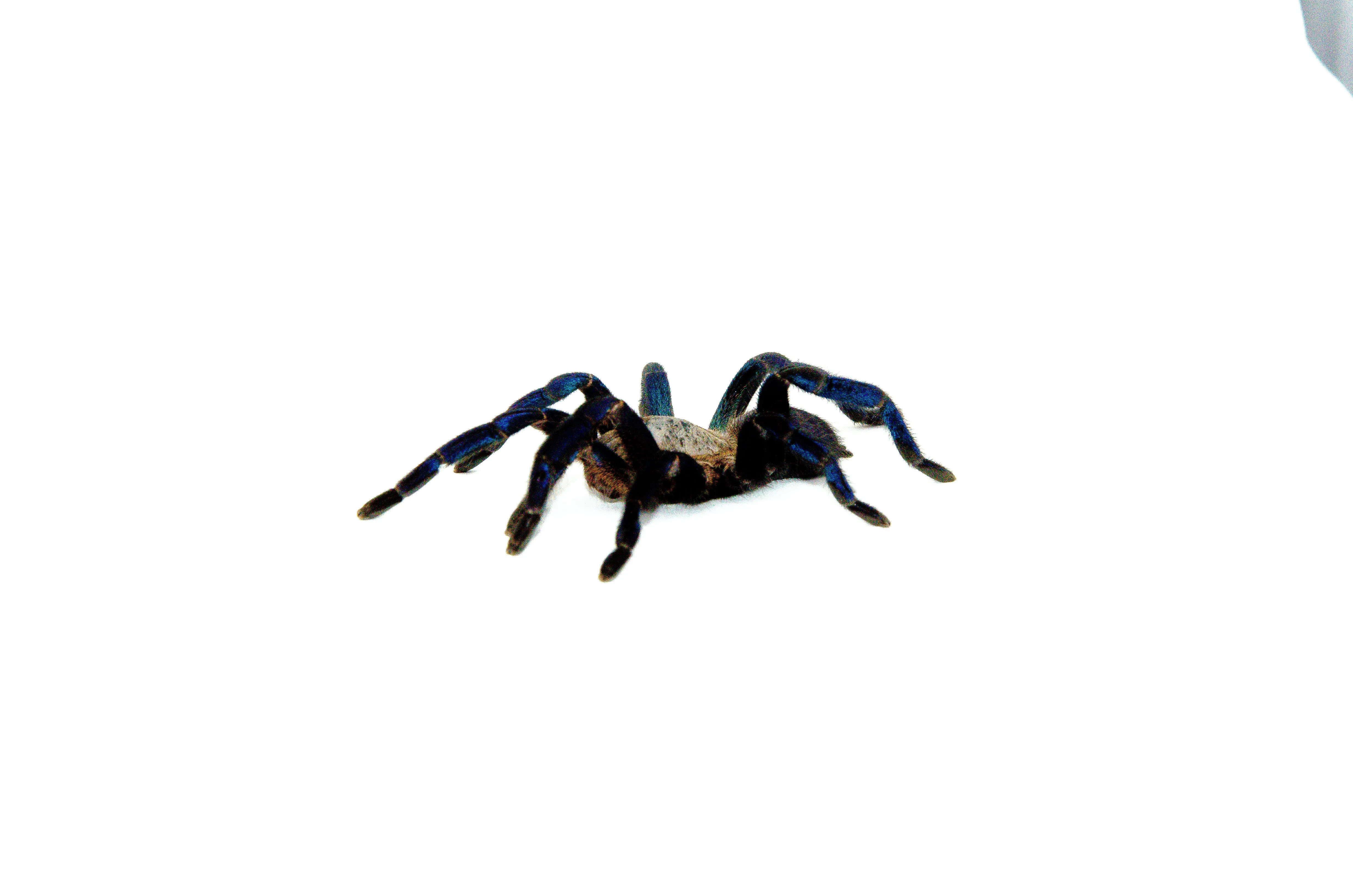
In the dappled light of their forest habitat, the blue coloration may provide a form of camouflage. The blue color can blend well with the shadows and light filtering through the canopy, allowing the tarantulas to become less visible to both predators and prey. By blending into the background, the tarantula can ambush its prey more effectively or avoid detection by potential predators. This camouflage advantage is crucial for their survival in the wild, ensuring they can feed and evade threats.
Signaling and Communication
Color can also play a vital role in intraspecies communication. The vibrant blue may serve as a signal to potential mates, indicating health and genetic fitness. During mating rituals, the bright coloration could be more visible, and attractive, to females. The color also could be used to signal aggression or dominance, giving rivals a visual warning. These visual cues allow for effective social interactions among Cobalt Blue Tarantulas, contributing to their reproductive success and social organization.
How to Identify a Healthy Cobalt Blue’s Colors
The coloration of a Cobalt Blue Tarantula serves as a visual indicator of its overall health. Observing the intensity and distribution of the blue color can provide insight into its well-being. Factors such as diet, environment, and age can all affect the colors. A healthy Cobalt Blue will typically exhibit a rich, vibrant blue across its legs and carapace. Variations may occur, but a consistently bright and evenly distributed color suggests a thriving tarantula. It’s important to recognize the signs of changes that could indicate an issue.
Factors Affecting Color Intensity
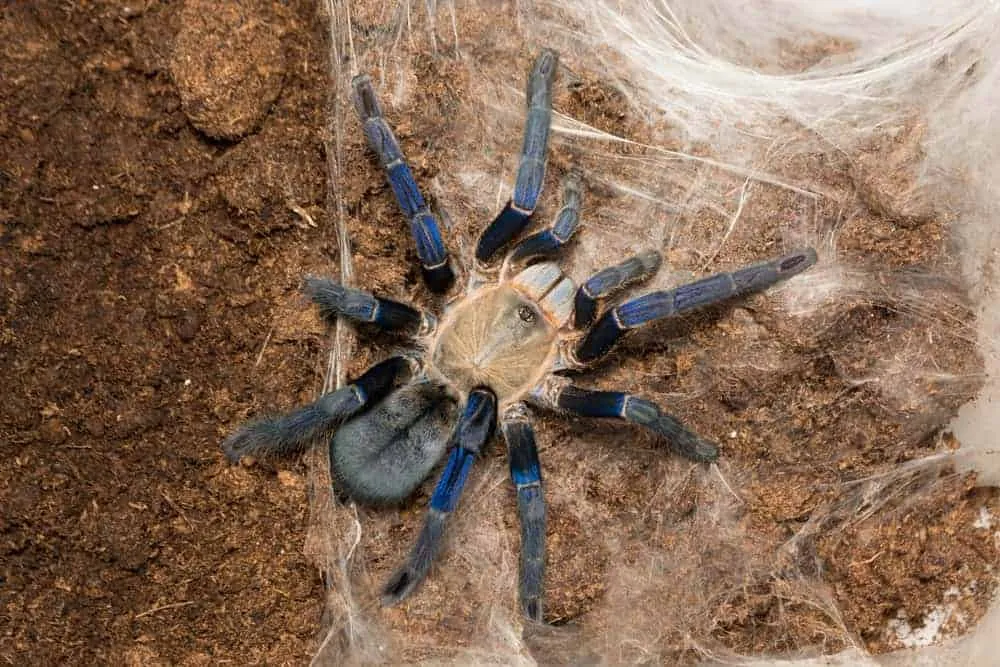
Several factors can affect the intensity and vibrancy of a Cobalt Blue Tarantula’s color. Diet plays a key role, as a diet rich in essential nutrients contributes to the healthy development of the exoskeleton and the structures that produce the blue hue. Environmental conditions, such as temperature and humidity, also affect the color. Maintaining optimal conditions for the tarantula is critical for allowing them to flourish. The tarantula’s age can also influence the color, as the intensity can change as it matures. Proper care involves understanding and managing these elements to ensure the tarantula’s appearance is maintained.
Diet’s Impact on Color
A well-balanced diet is fundamental for the overall health and vibrancy of the Cobalt Blue Tarantula’s colors. A diet primarily consisting of appropriately sized insects, such as crickets or roaches, provides the essential nutrients needed for the tarantula’s exoskeleton development. The nutritional content of the food, including proteins, vitamins, and minerals, can influence the intensity of the blue. Supplementing their diet with occasional treats, like a mealworm, can provide additional nutrients. Regular feeding and a diverse diet are essential to maintaining the brilliant blue coloration.
Environmental Influence on Color
The environment significantly impacts the coloration of Cobalt Blue Tarantulas. Maintaining proper humidity and temperature levels is crucial for their health and appearance. A humid environment facilitates proper molting, which is essential for the tarantula to shed its old exoskeleton and reveal its new, vibrant colors. Proper ventilation is also critical to prevent the buildup of moisture that can cause health issues. Ensuring that the substrate is appropriate, the enclosure is clean, and the tarantula has enough space all contribute to maintaining the color of the tarantula.
The 7 Most Fascinating Facts About Cobalt Blue Colors
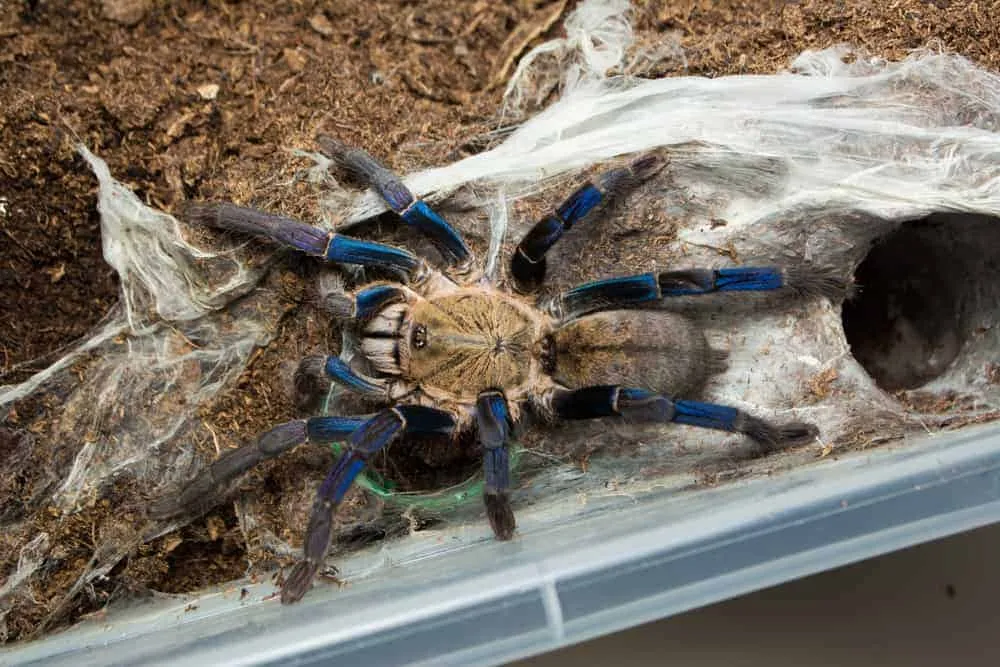
The Cobalt Blue Tarantula is a captivating species. Beyond their striking appearance, they offer a wealth of fascinating facts. From their unique biological structures to their behaviors, these details highlight the wonders of these creatures. These details offer a deeper appreciation for what makes the Cobalt Blue Tarantula one of the most sought-after species in the tarantula-keeping world.
Fact 1 The Bright Blue Legs
The most striking feature of the Cobalt Blue Tarantula is its bright blue legs. These legs are not just for show they also play a role in locomotion and sensory perception. The vibrant color is due to structural coloration. The legs can be used to detect vibrations in their environment. This helps them locate both prey and danger.
Fact 2 The Metallic Carapace
In addition to its legs, the carapace (the top part of the cephalothorax) of the Cobalt Blue Tarantula often displays a metallic sheen. This sheen is another example of structural coloration, with light interacting with the exoskeleton to create a shimmering effect. This adds another layer of beauty to this already stunning species.
Fact 3 The Color Changes with Molting
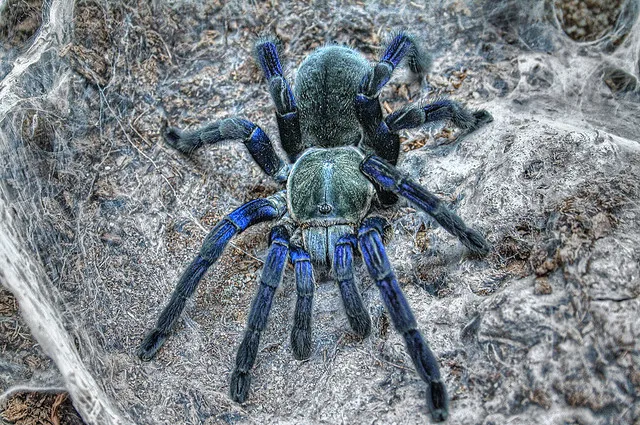
The Cobalt Blue Tarantula’s colors become even more vibrant shortly after molting. Molting is the process where the tarantula sheds its old exoskeleton to reveal a new one. After molting, the tarantula’s colors are at their brightest. The new exoskeleton has not yet been subject to wear and tear, and the structures responsible for the blue coloration are in pristine condition. This makes the tarantula look exceptionally radiant.
Fact 4 Blue Fading and Age
As Cobalt Blue Tarantulas age, their colors may begin to fade. This fading is a natural part of the aging process. The exoskeleton may become less reflective over time. The structures that produce the blue coloration may also degrade slightly. This does not necessarily indicate a health problem, but it is a sign of the tarantula’s maturity.
Fact 5 Their Origin
Cobalt Blue Tarantulas originate from the tropical forests of Myanmar and Thailand. Their native habitat is humid and warm, which is essential for their survival. This environment supports their brilliant coloration. Understanding their origin is essential for providing the right care in captivity.
Fact 6 Colors and Sexual Dimorphism
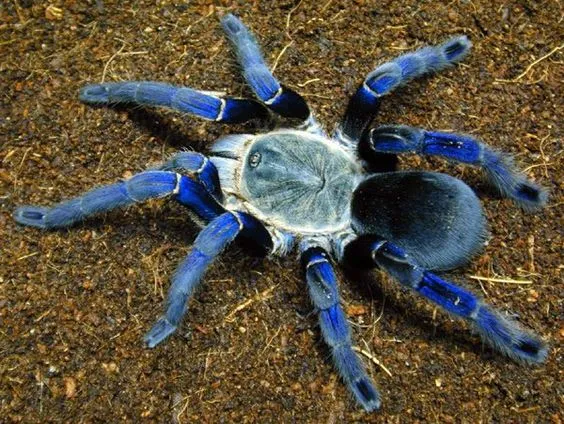
While the coloration of Cobalt Blue Tarantulas is striking, there is no significant sexual dimorphism. Both males and females exhibit the characteristic blue coloration, making it difficult to differentiate between the sexes based on color alone. Other physical characteristics, such as size and the presence of mating spurs on the males, are typically used to determine sex.
Fact 7 Color Variation Between Individuals
There is some variation in the intensity and shade of blue between individual Cobalt Blue Tarantulas. Some specimens may exhibit a more vibrant, electric blue, while others have a more muted, subtle hue. These differences may be related to individual genetics, environmental conditions, and age. This diversity adds to the uniqueness and appeal of these tarantulas.
How to Care for and Preserve Cobalt Blue Colors
Proper care is fundamental for maintaining the vibrant colors of Cobalt Blue Tarantulas. From the enclosure setup to the diet and health considerations, each aspect plays a role in ensuring that the tarantula’s coloration remains striking and indicative of a healthy specimen. Keeping these elements under control is essential for providing a suitable environment.
Providing the Right Environment
The enclosure should mimic the tarantula’s natural habitat. This includes providing a secure, well-ventilated enclosure that is appropriate for their size. Maintain a temperature between 75-85°F (24-29°C). The humidity should be kept between 60-70%. The substrate should be a mixture of coconut fiber and a little bit of vermiculite to help retain moisture. The enclosure should also include hiding places.
Choosing the Right Substrate
The substrate plays a crucial role in maintaining humidity levels and creating a comfortable environment. A mix of coco fiber, peat moss, and a bit of vermiculite is generally recommended. The substrate should be kept slightly moist, not wet, and should be deep enough to allow the tarantula to burrow if it wishes. The substrate should be replaced as necessary to maintain cleanliness.
Nutritional Considerations
A well-balanced diet contributes to the overall health. Offer a variety of appropriately sized insects, such as crickets, roaches, and mealworms. Ensure that the insects are gut-loaded before being fed to the tarantula. This will help them get the necessary nutrients. Supplements are generally not required for Cobalt Blue Tarantulas, but they are safe if given in moderation.
Common Color-Related Health Issues
While the vibrant colors of Cobalt Blue Tarantulas are often a sign of health, certain issues can affect their coloration. Understanding these common problems allows keepers to take prompt actions and ensure the tarantula’s well-being. Changes in the color of the tarantula should be monitored and evaluated.
Loss of Color as a Sign of Trouble
The loss of color or a significant reduction in vibrancy can indicate health problems. The most common reason for the loss of color can be related to improper molting. Lack of humidity can prevent successful molting. Changes in the color can also result from infections or underlying health issues. If you observe these changes, it’s important to examine their environment, diet, and overall health. Consult with a veterinarian experienced in tarantula care if the problem continues.
The Importance of Humidity
Maintaining the correct humidity levels is essential for the health and coloration of the Cobalt Blue Tarantula. Low humidity can lead to molting issues. Ensure the substrate is properly moistened to keep humidity levels optimal. Use a hygrometer to monitor humidity levels. Regular misting might be required to maintain humidity levels. Monitoring the humidity is essential to preserve the vibrancy of the tarantula’s colors.
